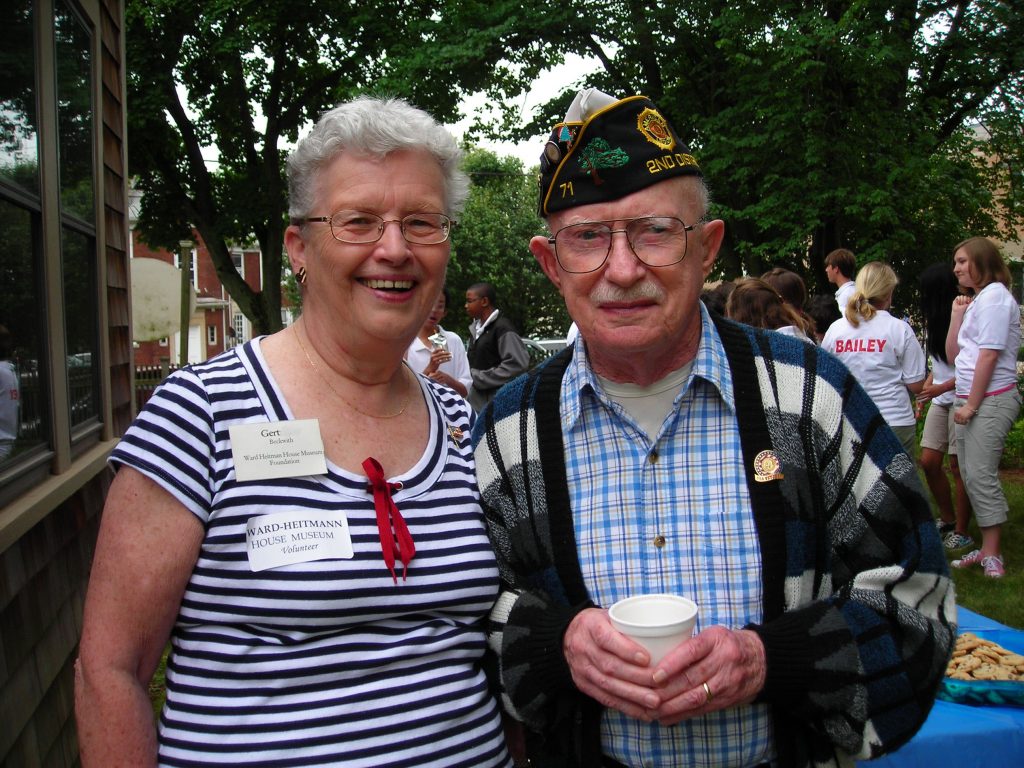The Armstrong Rubber Company
Part IV
Armstrong’s Personal Vignettes
Photo courtesy of Joanne Archibald

When your Historian asked for personal accounts from those whom had worked at the Armstrong factory, it seems that everyone questioned remembered the Banbury mixer. This hourglass-shaped production machine is a workhorse mixer of the plastics and rubber industries, and was a familiar sight to anyone who spent time at Armstrong’s. It resembles a robust dough-mixer, with two opposed rotors providing mixing force at the speed of 30-40 rotations per minute. Needless to say, the shearing action of this machine is intense.
Now, at Armstrong, a tire maker was a production worker who essentially built the raw tires. He created the tire by putting in place the wire beads which would fit over the wheel, and then he pulled the tire fabric around those beads. Originally, that fabric consisted of four layers of cotton; later Rayon was used, and still later fiberglass, and most recently, the standard fabric is a system of steel belts, which totally reinforce the structure of the tire. The work of a tire maker is heavy and hard; the unfinished product which they produce is called a carcass.
In the early 1970s, one of those tire makers was Lenny Croteau, young and fresh out of West Haven High School. Somewhere along the line, he met an Armstrong sales manager named Dawn Manseau. They would eventually marry and have three daughters; today, they are grandparents, and their family is and remains active in First Church. (The family has now moved out of state.)
Back in the 1950s, there was a confirmed bachelor named Don Beckwith, who worked in the claims adjustment department at Armstrong’s. One day, he was sent a secretary named Gert Dickson, and it wasn’t long before (in Don’s words), “I realized that I didn’t want to be a bachelor anymore.” The Beckwiths married and had three children; today, they too are grandparents. (Both Don and Gert have since passed away.)
First Church’s head usher for many years was Harvey Lobner, another Armstrong employee. Harvey has read the preceding account, and has attested that it is accurate. (Harvey has since passed away.)
Judy Iversen remembers her time at Armstrong’s in the late 1960s: “Back then it was still a thriving business. I believe that at one time the warehouse was the largest free-standing single warehouse in the U.S. New employees were given a tour through the factory and told about the business, from information about rubber trees to extruding to molds for tires, and so forth. It was a good job with nice people. It troubles me that the old Armstrong factory has stood vacant for so many years. Sometimes, my husband and I will sit in the coffee shop at Stop & Shop on Elm Street, and look across the street and remember the old times at Armstrong’s and the days of old West Haven.”
Jeanne Insalaco tells it like this: “My Sicilian father-in-law, Steve Insalaco was a foreman at the West Haven plant. He knew every piece of machinery there, inside and out. The engineers were often unable to make the production machinery function properly, so they turned to him for help—and he always had the answers. When he came home at night, his clothes were almost always black from the lampblack that was used in the tire production.
“He met my mother-in-law, Cecelia Cambino there. When he was driving to work, he saw her walking to work every day; so one day he offered her a ride, and the rest is history. One thing about Armstrong’s: family pulled in family—and everyone knew everyone’s business.
“My father-in-law worked all day in the factory. When he got off work at night, he went directly to a plot of land on Sawmill Road near Meloy Road that had been given to him by his father-in-law, Joseph Cambino, who owned Buddy’s Barber Shop on Washington Avenue. There, he built a house for his family—how he wanted to get them out of that Water Street apartment in New Haven! But just three years after he finished the house, he was visited by some people from the state, who told him that Interstate 95 would soon be running through his property, and they would have to demolish the house or move it. Thankfully, he arranged to have the house moved to nearby Edwards Street, where it still stands today. Sawmill Road then was a dirt road that was ‘paved’ by laying oil on the dirt to make it passable, and to keep the dust down.”
Our thanks to those who have helped to keep alive this chapter in the life of Old West Haven!